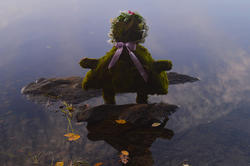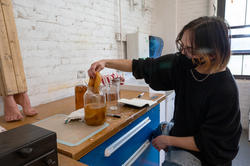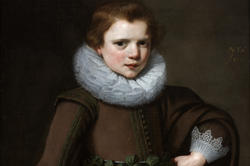Four graduating fine arts students discuss the joy of working with their hands and mixing mediums at RISD.
Crafting Connections
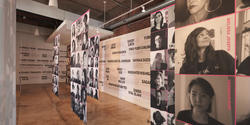
What does it mean to be “as American as apple pie?” Who are the keepers and bearers of cultural knowledge in our country? Artist/educator Namita Gupta Wiggers has been focused on such questions for most of her life and is committed to disrupting dated and exclusionary notions and framing new ways to talk about the West, modernity and what constitutes being American.
The daughter of Indian immigrants, Wiggers says that her work is personal. “I am a brown body in a white context,” she explains, “especially in the spaces I operate in, such as museums and institutions of higher ed. But I am an American. And apple pie is actually an English invention made from fruit that was cultivated in Asia.”
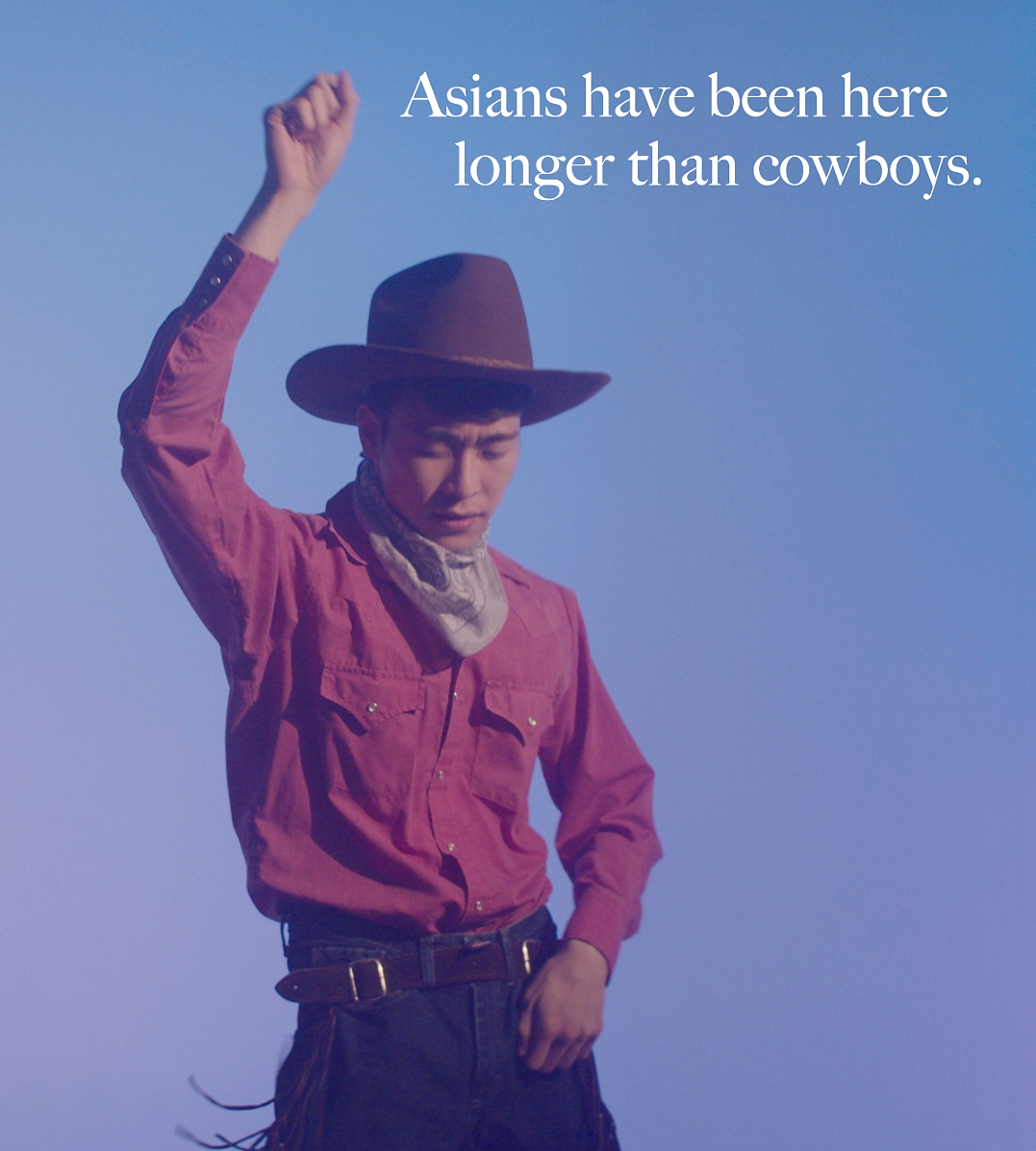
Wiggers shared her research with RISD students as the first lecturer in the Sculpture department’s fall speaker series. Based in Portland, OR, she is founding director of the MA in Critical Craft Studies at Warren Wilson College, the first and only low-residency program focused on craft histories and theory. She also cofounded and led Critical Craft Forum, an online platform for dialogue and exchange, and served as curator and then chief curator and director of Portland’s Museum of Contemporary Craft from 2004–14. Like her curatorial strategy, her approach to research involves sorting through multiple questions at once and making connections across cultures and ideas that aren’t immediately obvious.
The tired old argument about what should be considered “craft” and what is “art” is of no interest to Wiggers. “What I am interested in is how research can catalyze community, action and visibility,” she says.
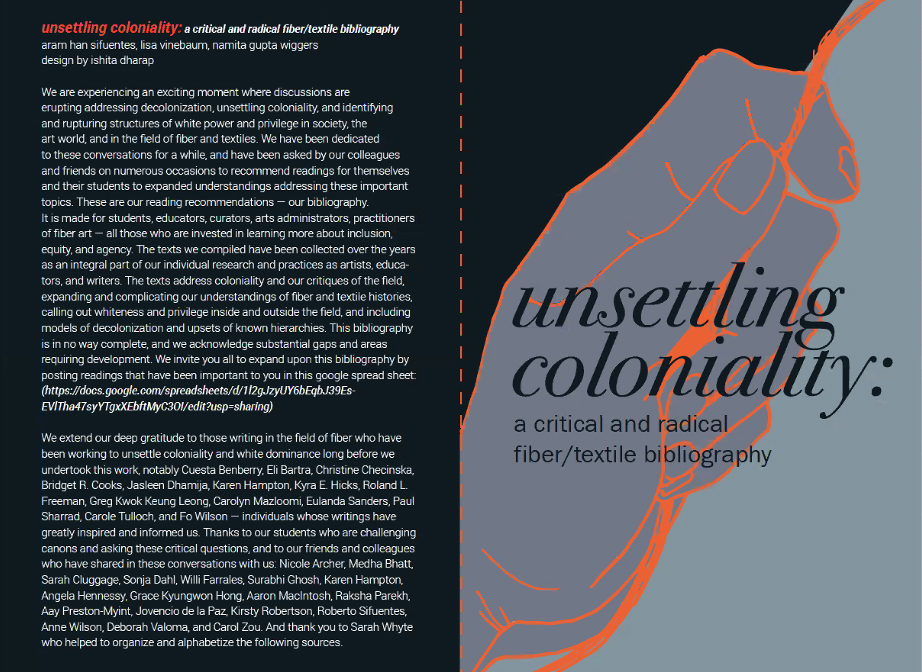
Wiggers shared with students Unsettling Coloniality, a “critical and racial fiber/textile bibliography” she created with Aram Han Sifuentes and Lisa Vinebaum that’s available for free online. She also introduced them to ROLODEX: Craft a Conversation, a growing index of self-identified Asian American and Pacific Islanders (AAPI) working in craft today. Initiated in April 2021 in response to a nearly 70% increase in violence against AAPI communities, the project is centered on people, their descriptions of themselves and their connections to craft—rather than on the objects they create.
“What I am interested in is how research can catalyze community, action and visibility.”
Is it possible to enjoy beautiful, handcrafted objects without digging into their histories and the materials used to make them? “No,” says Wiggers. “Histories need to be brought into view.”
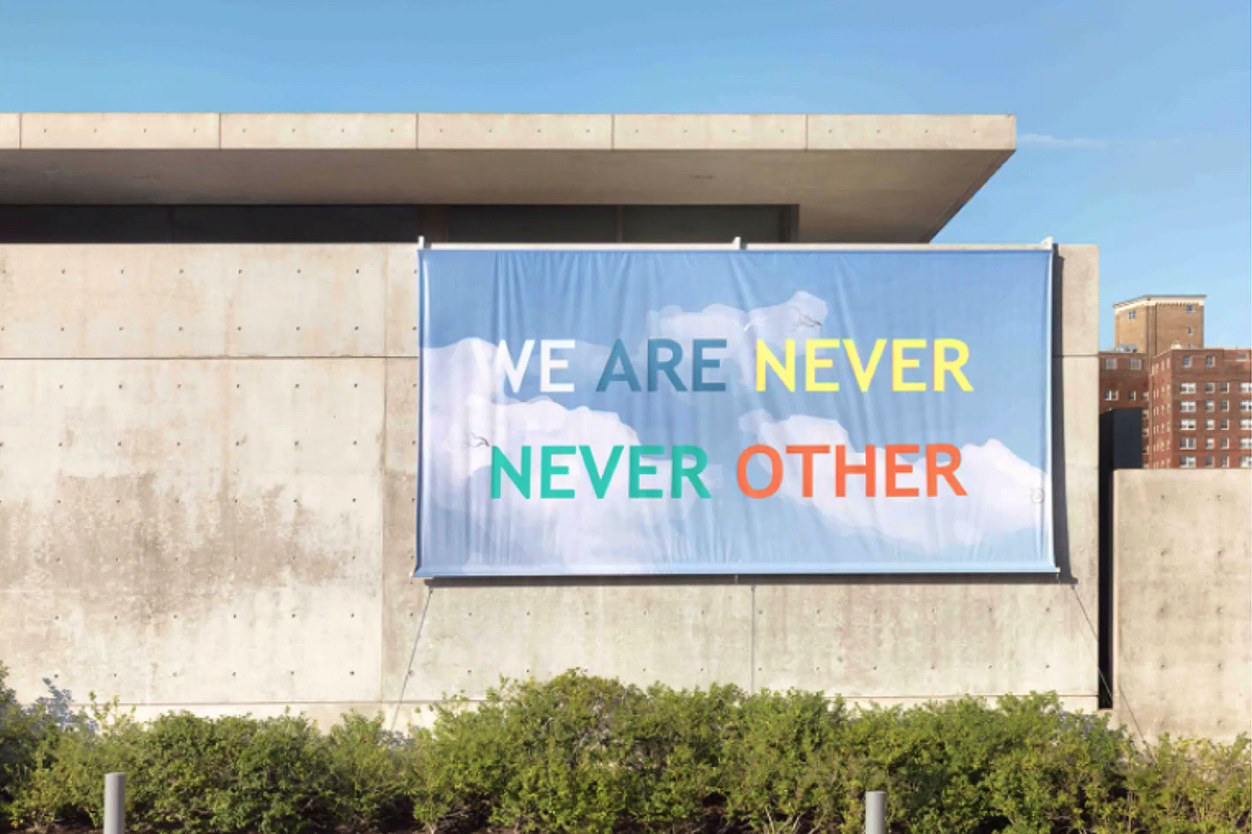
She referenced research by Sven Beckert and Lisa Lowe reflecting on the history of global trade and how objects and goods have been moving around the world since the Silk Road was established some 2,000 years ago. “It’s a complex commercial dance that started long before the Industrial Revolution and any current notions of ‘globalization,’” she says. “Humans have increasingly been separated from the source of goods and materials.”
“It’s a complex commercial dance that started long before the Industrial Revolution and any current notions of ‘globalization.’”
Wiggers encouraged students to think about the ancient beginnings of craft. “William Morris and the Arts and Crafts Movement are frequently placed at the beginning of craft’s history, which obscures the persistence and longevity of craft, removes women and people of color from the narrative and ignores millennia of craftwork,” she says. “By questioning the long-standing unacknowledgment of places with other making histories, we make room for multiple kinds of histories to come into view.”
—Simone Solondz
The lecture series continues on October 26 (in collaboration with the Painting department) with artist Stephanie Syjuco, who uses critical wit and collaborative co-creation to investigate issues of economies and empire.
October 4, 2021
